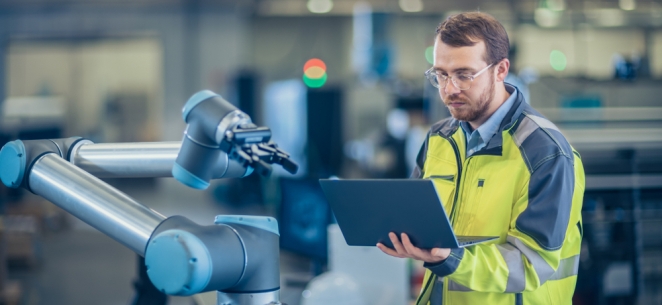The automation of specific functions has been met with two dominant barriers: one being the perception that only humans can do ‘creative’ tasks, and the other is the fear of humans being replaced by machines in a cost-saving exercise.
If you were to say to workers, “we have deployed these software robots to free you from mundane tasks so you can focus on unlocking value for the company and freeing you up for more valuable work” what they here is, “the robots are coming to take our jobs”.
Fear that automation will replace rather than aid workers is a massive hurdle to automatic technology being embraced, but this can be remedied by asking the right questions. Asking colleagues about the repetitive tasks they do on a day-to-day basis and how much time they could save if these steps were automated in isolation and controlled by them might change their perception.
Automation isn’t about replacement but rather efficiency, to spend more time doing valuable and meaningful work. The creative industries are a great example of where the above could be leveraged to great effect but is also a classic blocker to innovative work.
The uncomfortable truth

The truth is that marketing budget is applied to repetitive as well as creative and innovation tasks with human capital wasted in manual processes. By using RPA (robotic process automation) in combination with AI and Machine Learning (ML), the technology can recognise key entities and objects in images/video as well as drawn illustrations.
Once those entities have been recognised, it auto searches the DAM and leveraging standard software tools, starts to crop, mask and composite against the target Ad layouts required. This application of RPA frees up valuable creative talent to focus on more complex value-add tasks, be more playful and experiment more.
With only so many hours in the day, it’s easy to get behind or distracted by the daily grind. Creatives follow processes with many manual repetitive steps. These steal time and budget from creative teams' ability to create stand out work.
In today’s fragmented and fast-evolving landscape, any large-scale enterprise has challenges when generating large volumes of assets for distribution across marketing channels, including print and TV. Translation, adaptation and multiple agency and media owner hand-offs can introduce error.
Working with the machine

A combination of RPA and Computer Vision can quickly identify if the correct logo has been used and if it is in the correct place, immediately detecting potential process errors and eliminating the need for inefficient manual checks. It can also check correct font usage, correct terminology used in copy and meta data in the file for print and/or accessibility. This can be applied to print, digital and TV creative assets.
Agencies generate multiple ad units across many media formats, the sheer volume of which mandates a less fluid and templated creation process with simple rules applied on sizing, placement and with humans driving the composition process.
Again, combination of RPA and Computer Vision can accelerate the composition process for creative assets, having been trained on a data set of correctly composited Ads for a brand. Checking correct assets usage, placement and making sure that they adhere to brand Guidelines and Governance as the Ad is composited.
This allows higher throughput of non-master creative assets and permits creative teams to spend more time on experimentation and disruptive ideas for the same budget.
Moving forward
Creativity and innovation are still heavily reliant on human skills as they require higher levels of cognition, emotional intelligence, and social awareness. RPA is a cost-effective way to automate repetitive tasks that are not creative in nature.
By understanding this, we can free humans from the latter (the reverse of what really happens in many agencies today) and if we positioned those discussions in that light, who wouldn’t say yes?
By John Cunningham, Chief Technology Officer (CTO) at UNLIMITED







